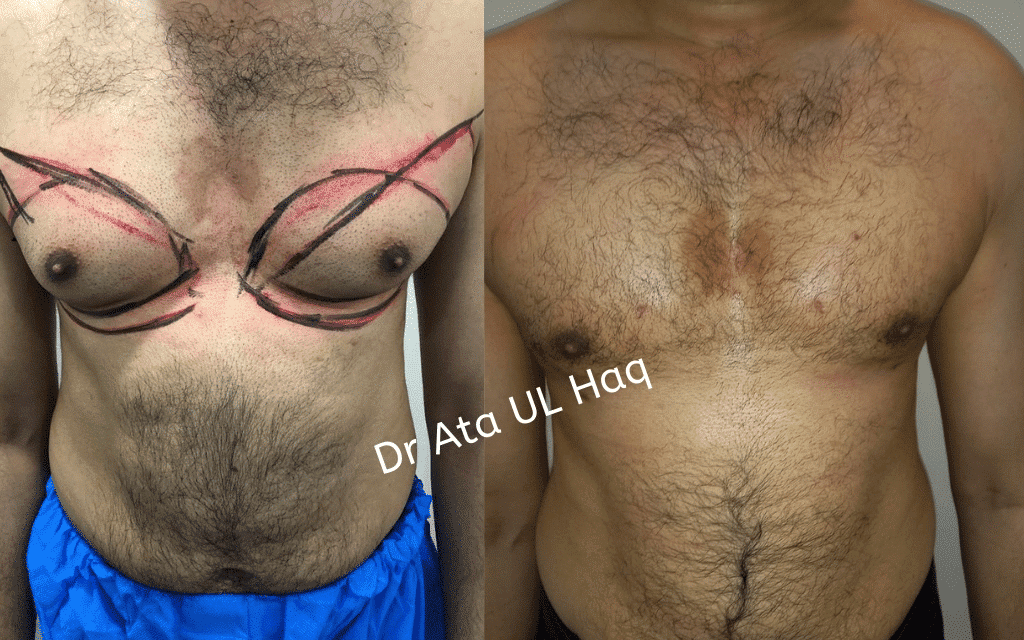Gynecomastia, a condition set apart by the development of bosom tissue in guys, is something other than an actual wellbeing concern—it’s a subject encompassed in misconception and frequently, cultural shame. Males can suffer from this condition at any age, causing emotional and physical discomfort. As of late, the headways in clinical mediations, especially in urban communities like Lahore, have opened up new roads for powerful treatment and the board. ‘Gynecomastia Surgery in Lahore‘ has become a significant option not just for those seeking treatment options but also for highlighting the progress in healthcare services available in the region.
Table of Contents
Understanding Gynecomastia
Gynecomastia is a condition in which men’s bosom tissue extends. It results from an unevenness in estrogen and testosterone, the key chemicals directing male and female attributes. Dissimilar to pseudogynecomastia, which is just an overabundance of greasy tissue in the chest region, gynecomastia includes genuine glandular tissue development. This development can prompt delicacy and can happen singularly (in one bosom) or respectively (in the two bosoms).

The predominance of gynecomastia changes across various age groups. Neonatal gynecomastia, found in babies, is brief and brought about by maternal chemicals. Juvenile gynecomastia is normal during pubescence because of regular hormonal vacillations and, as a rule, settles over the long haul. Gynecomastia can occur in adult men for a variety of reasons, such as hormonal changes brought on by age, side effects from medications, or underlying medical conditions. Understanding the subtleties of this condition is critical for legitimate analysis and treatment, as well as for easing the social and mental pain frequently associated with it.
Causes and risk factors
The development of gynecomastia is influenced by various factors that disrupt the hormonal balance between estrogen and testosterone. While estrogen causes breast tissue growth, testosterone counters this effect. An increase in estrogen levels or a decrease in testosterone can lead to gynecomastia. Common causes include natural hormone fluctuations during puberty and aging, but other factors can also play a significant role.
Ailments are key donors. Liver problems, like cirrhosis, can upset chemical levels, while kidney disappointment can prompt changes in the body’s science that influence chemical creation. The production of hormones that can lead to gynecomastia is increased by thyroid disorders, particularly hyperthyroidism. Furthermore, corpulence can prompt expanded estrogen creation as fat cells convert testosterone into estrogen.

Certain drugs and substances likewise represent a gamble. Anabolic steroids, generally utilized in weight training, can upset chemical equilibrium. Indeed, even substances like liquor and pot can impact chemical levels. For both prevention and the development of a specific treatment strategy, which may include lifestyle changes or medical interventions like gynecomastia surgery, a thorough understanding of these risk factors is essential.
Diagnosis of Gynecomastia
Physical examinations, medical history evaluations, and possibly imaging or laboratory tests are all part of the process of diagnosing gynecomastia. This cycle is significant not exclusively to affirm the presence of gynecomastia, but in addition to preventing other potential medical problems, similar to breast malignant growth, which is uncommon in men yet a worry. The most vital phase in diagnosing gynecomastia is an exhaustive, actual assessment by a medical services supplier. During this test, the specialist evaluates the bosom tissue—its size, consistency, and any related side effects like delicacy. A point-by-point clinical history is likewise taken to recognize any expected causes, for example, medicine use, sporting medication use, or fundamental medical issues that could add to hormonal irregular characteristics.
Upon diagnosis, treatment options, including gynecomastia surgery, can be discussed. The gynecomastia surgery price in Lahore, like in many cities, varies based on factors like the surgeon’s expertise, the complexity of the procedure, and the healthcare facility. Typically, the gynecomastia surgery cost is influenced by these variables, and it’s important for patients to consider both the financial aspect and the potential health benefits when deciding on surgery. Patients should consult with medical professionals to get accurate estimates and understand the full scope of the procedure, recovery, and associated costs.
Treatment Options
The underlying cause and severity of gynecomastia determine the course of treatment. For the overwhelming majority, particularly in cases connected with pubescence, the condition might be determined normally without mediation. However, when treatment is required, options include hormonal imbalance medication and more extensive surgical procedures. The popular and effective treatment known as gynecomastia surgery involves removing excess breast tissue to restore a more typical male breast contour.

While the particulars of the method, including the gynecomastia medical procedure cost, can fluctuate in light of elements like area, a specialist’s skill, and the intricacy of the medical procedure, it’s not an unexpected thought about when different therapies neglect to yield results or when the condition causes critical agony or profound trouble. In urban communities like Lahore, patients looking for gynecomastia medical procedures ought to explore and talk with qualified specialists to figure out the expected results and monetary ramifications of such a strategy.
Conclusion
In summarizing the multifaceted nature of gynecomastia, it’s clear that this condition extends beyond physical symptoms, encompassing emotional and psychological realms as well. While gynecomastia surgery remains a viable and effective option for many, especially in technologically advanced areas like Lahore, it’s important to recognize the value of gynecomastia treatment without surgery. People looking for less invasive solutions can choose from these non-surgical options, such as medication and lifestyle changes. Eventually, the excursion towards tending to gynecomastia, whether through careful or non-careful means, highlights the significance of customized medical services. It’s an excursion towards actual easing as well as towards mental strengthening and working on personal satisfaction for people wrestling with this condition.

